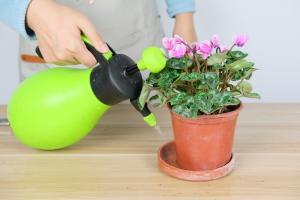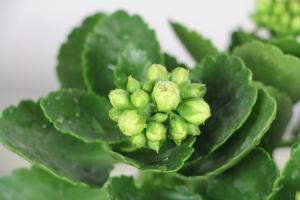How to Take Outdoor Potted Plants Inside
As the seasons change, you may find yourself needing to move your outdoor potted plants inside. Whether you are preparing for colder weather or simply want to add a touch of greenery to your indoor spaces, there are some important steps you should follow to ensure the health and longevity of your plants. In this article, we will explore the essential steps you need to take to take your outdoor potted plants inside.
Step 1: Choose the Right Time
Before moving your outdoor potted plants inside, it is important to choose the right time. Ideally, you should wait until the weather is consistently below 50 degrees Fahrenheit, as this will reduce the chances of shock to your plants. You should also avoid moving your plants during times of extreme weather, such as during high winds or heavy rain. Additionally, you should try to move your plants when they are not in active growth, such as in the fall or winter.
Step 2: Prepare Your Plants
Before moving your plants inside, you should take the time to prepare them. This includes inspecting your plants for pests or diseases, which can be easily transmitted to your other indoor plants. You should also prune your plants, removing any dead or damaged foliage. This will help to promote healthy growth and prevent disease. Finally, you should make sure that your plants are well-watered prior to moving them inside, as this will reduce the chances of shock.
Step 3: Choose the Right Location
Once you have prepared your plants, it is time to choose the right location for them inside your home. This will depend on the type of plant you have and the amount of light it requires. In general, you should choose a room that receives bright, indirect sunlight, such as a south-facing window. You should also make sure that the temperature in the room is consistent, as sudden changes in temperature can be stressful for your plants. Finally, you should avoid placing your plants near any sources of heat, such as radiators, as this can dry them out.
Step 4: Adjust Your Care Routine
Once your plants are inside, you will need to adjust your care routine to ensure their health and longevity. This includes monitoring the temperature and humidity levels in the room, as well as adjusting your watering schedule to account for the lower light levels. You should also fertilize your plants regularly, as indoor environments can be nutrient-poor. Finally, you should be vigilant for any signs of pests or diseases, as these can quickly spread to your other indoor plants.
Conclusion
Taking your outdoor potted plants inside can be a great way to add a touch of nature to your indoor spaces. However, it is important to follow the right steps to ensure the health and longevity of your plants. By choosing the right time, preparing your plants, choosing the right location, and adjusting your care routine, you can help your plants thrive indoors for years to come.

 how many times do yo...
how many times do yo... how many planted tre...
how many planted tre... how many pine trees ...
how many pine trees ... how many pecan trees...
how many pecan trees... how many plants comp...
how many plants comp... how many plants can ...
how many plants can ... how many plants and ...
how many plants and ... how many pepper plan...
how many pepper plan...































